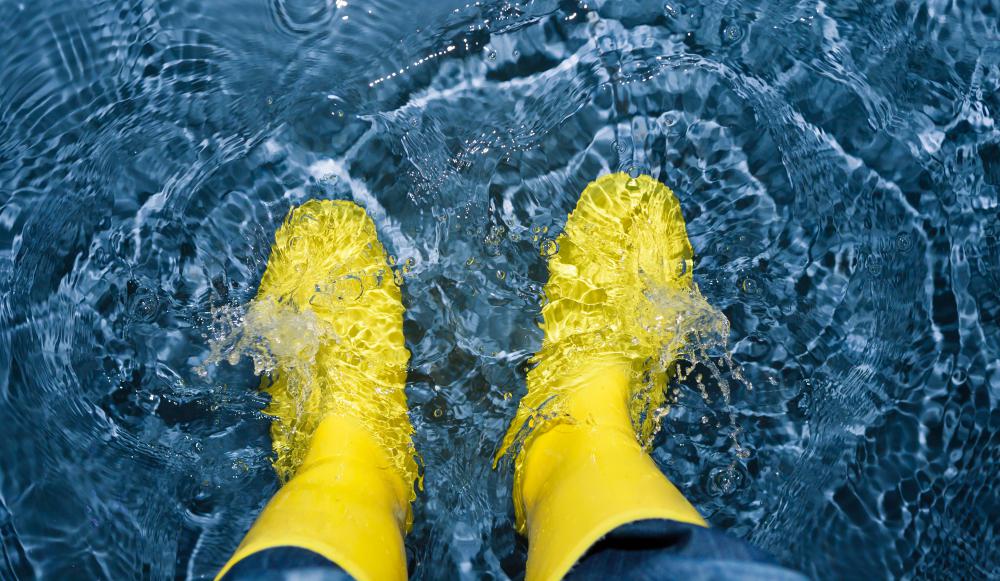At TheHealthBoard, we're committed to delivering accurate, trustworthy information. Our expert-authored content is rigorously fact-checked and sourced from credible authorities. Discover how we uphold the highest standards in providing you with reliable knowledge.
What Is Immersion Foot?
Immersion foot, also known as trench foot, is a dangerous medical syndrome. It is caused by sustained exposure of the feet to wet conditions. Immersion foot is often associated with war and other disasters because it caused millions of injuries and deaths in the wars of the 19th and 20th centuries. It can occur anytime the foot is exposed to water, including during sea travel or excessive sweating. Preventive measures such as maintaining dry footwear are recommended, because trench foot is a serious condition, and even recovery can be painful.
Anyone can be affected by immersion foot in the wrong conditions, but it was first recorded as a widespread syndrome during Europe’s Napoleonic wars in the early 1800s. This might be because the soldiers’ uniforms included tight leather boots that created an ideal environment for trench foot. Soldiers on the battlefield can spend hours or days without changing their footwear, in extreme conditions such as cold, wet weather. Trench foot was a major health crisis during World War I, causing infection, lost limbs and death for soldiers on both sides of the conflict. It was a factor in every major war of the 20th century as well as the desert conflicts in Afghanistan and Iraq.

Immersion foot occurs when the feet are exposed to moisture, especially wet socks or footwear, for extended periods of time — although it could be as little as 11 hours. It is especially prevalent in cold conditions, when those affected might not notice a loss of sensation, one of the earliest warning signs. Other signs of circulation loss might also be present, such as tingling, pain and a bluish or red tinge to the skin. Blisters and swelling also are possible and must be treated quickly to avoid infection. Extreme cases lead to gangrene, a decaying of tissue that can result in death if the affected area or limb is not removed.

Trench foot gained its name during the trench warfare of World War I, where it affected 20,000 British soldiers in 1914 alone. Any wet environment can create the condition, cold or otherwise. Soldiers in tropical areas such as Vietnam and the South Pacific experienced it because of humid locales, as have workers in flooded rice paddies. In desert locations, it can be caused by excessive sweat collecting in the boot and soaking the sock. Shipboard workers also are at risk for immersion foot, as are the survivors of floods and other disasters.

To prevent immersion foot, experts recommend changing socks frequently, keeping feet clean and dry and carrying extra boots or footwear. During World War I, British soldiers were inspected daily by officers who had been trained to recognize symptoms of trench foot. Suspected cases should be treated with warm water to restore circulation, and feet should be elevated to reduce swelling. A medical professional should be consulted at the earliest opportunity. Recovery from trench foot is possible, but it can be a slow and painful process.
AS FEATURED ON:
AS FEATURED ON:













Discuss this Article
Post your comments